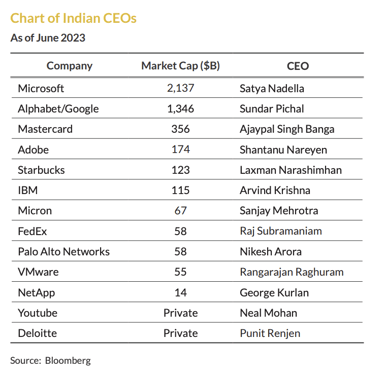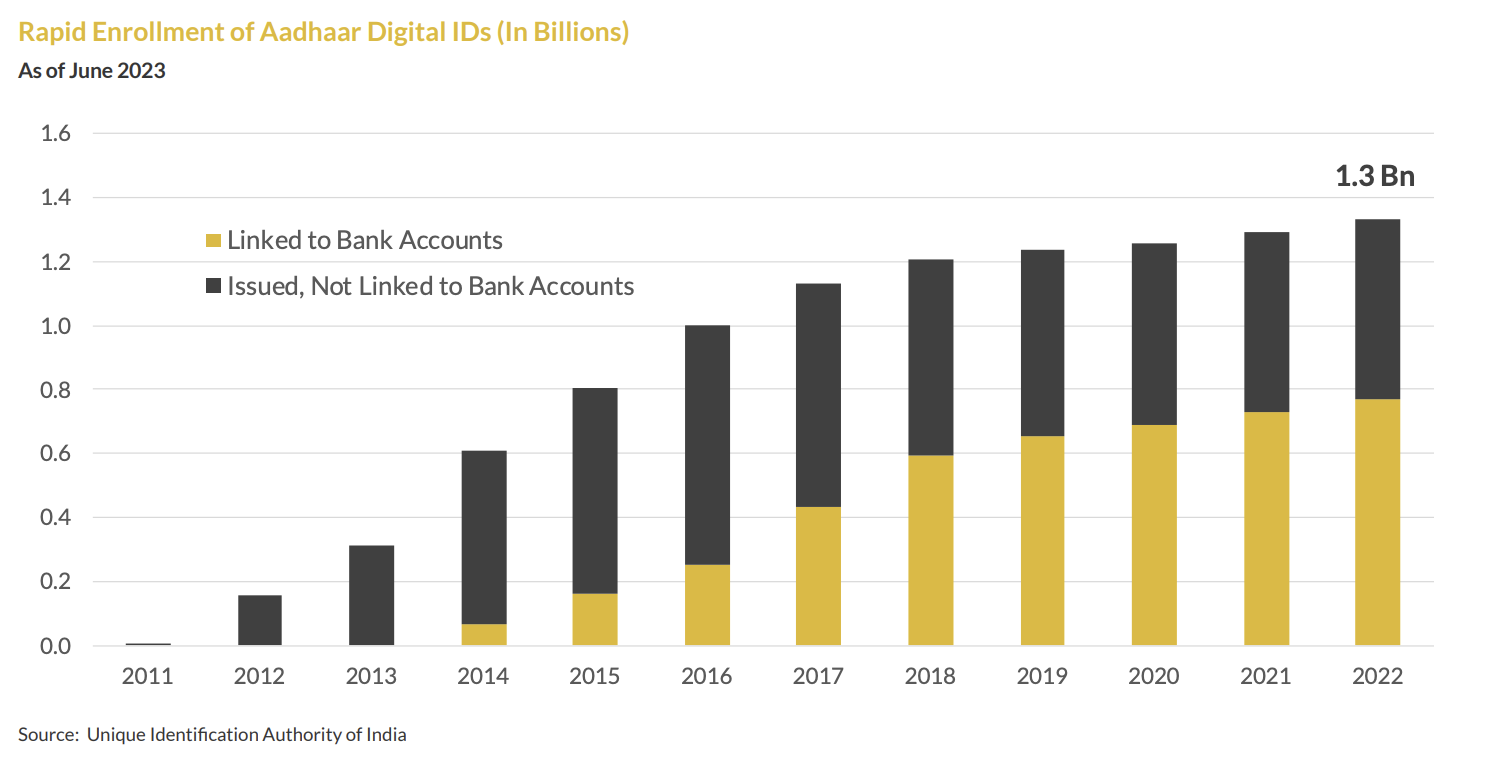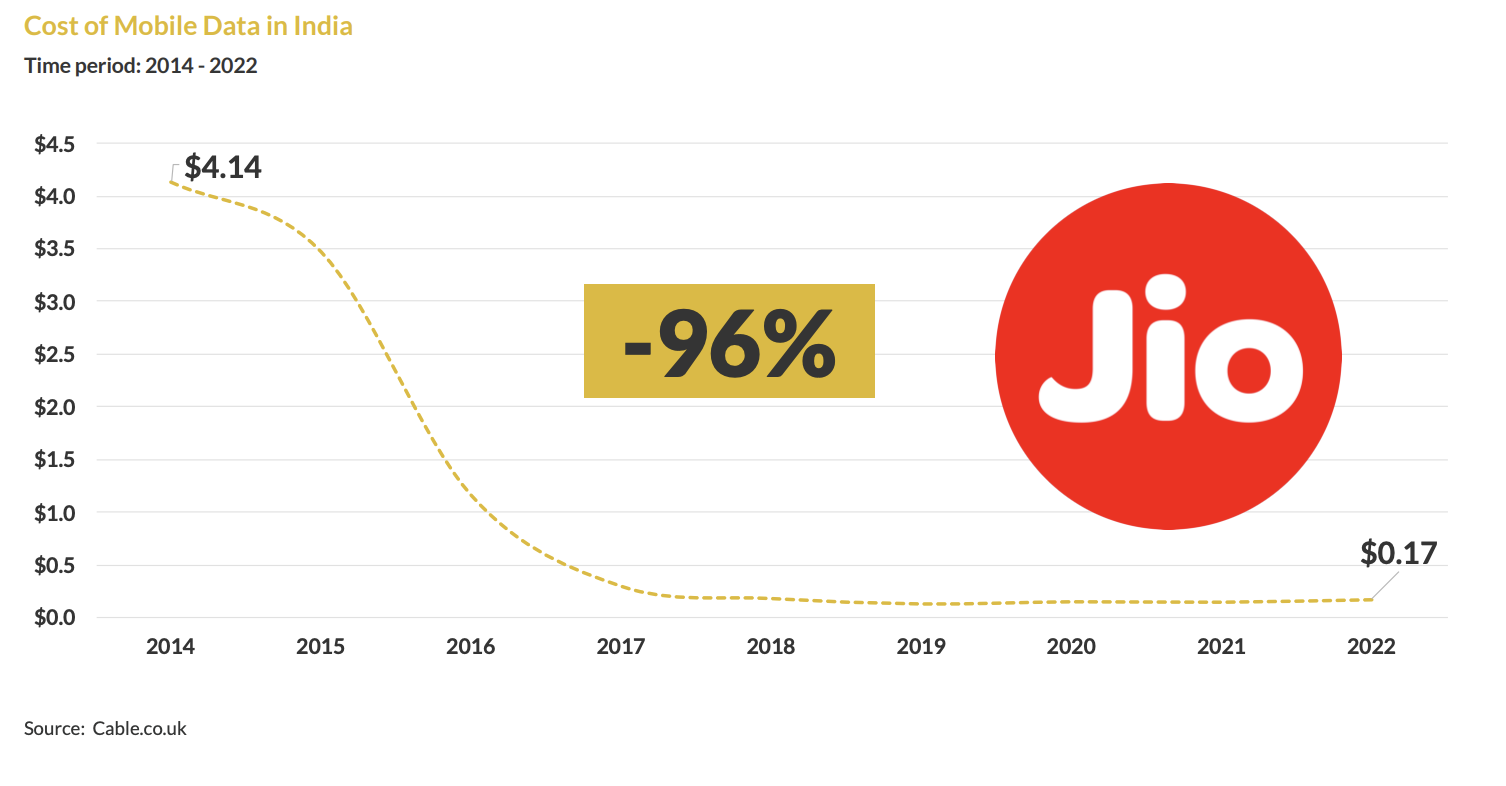.png?width=2240&height=1260&name=Blog%20images%20(2).png)
India’s recent economic growth is far outpacing what financial experts anticipated, with the country’s GDP recording over 7% growth in the 2022-23 fiscal year. The most populated country in the world is on track to remain the fastest-growing major economy this year and rank the third largest by 2027. How is such growth possible? India is betting big on itself, and we believe that investors should take note.
The country is making unprecedented investments in its infrastructure, from the physical to the digital world. Over the past decade, under the leadership of President Modi, the world’s largest democracy has set its sights on modernization. With billions of consumers hungry for connectivity, we believe the timing couldn’t be better for investors in India's internet stocks ready to propel the country into the future. Here’s a look at India’s strategic infrastructure investments that are spurring an economic boom and digital golden age:
India’s Most Notable Strategic Investments
- Human Capital + Technology Ecosystem
- Physical Infrastructure
- India’s Digital Public Infrastructure
- The Launch of Jio Digital
Human Capital + Technology Ecosystem

Unlike other emerging markets, India has a homegrown technology sector that dates back decades. Tata Computer Systems (now TCS/Tata Consulting Services) was founded in 1968, and Infosys was founded in 1981. Both have been publicly traded for over 20 years.
India boasts the world’s largest number of computer science engineering graduates annually. Historically, however, many of these graduates emigrate to take positions in other countries - mainly the United States. Global technology giants like Google and Microsoft have employed thousands of Indian technologists and managers over the past 30 years, mostly on H-1B work visas.
Indian engineers highly covet these positions. So much so that hundreds of visa hopefuls flock to the Chilkur Balaji Temple in Hyderabad to pray to the “Visa God.” The 500-year-old temple gained a reputation as a visa seeker’s go-to spot in the 1980s after a few students initially rejected by the US consulate in Chennai went on to secure visas after seeking blessings at the temple. Today, both Google and Microsoft have Indian CEOs who originally joined their companies via the H-1B visa program! (No word as to whether the Visa Temple aided Satya Nadella or Sundar Pichai.)
Investments in Physical Infrastructure in India
India's investment lagged over the past 30 years as China made massive and well-planned investments in physical infrastructure. This has changed significantly during the ten years that Prime Minister Modi has been in office. Modi, who enjoys a 77% approval rating, has led a massive increase in infrastructure investment.
In August 2021, India introduced Prime Minister Gati Shakti, aka the National Master Plan for Multi-Modal Connectivity, an Indian mega project worth $1.2 trillion to provide a competitive advantage for manufacturing in India. The plan aims to bring all relevant government ministries and departments together and create a digital platform for more integrated and holistic planning of projects. The plan's main objective is to achieve a sustained $5 Trillion economy in this decade and expand to a $20 trillion economy by 2040.
- Railways: Modi has championed significant investment to modernize all elements of rail travel. In the next five years, Indian Railways will remodel 200 train stations into modern facilities and build 300 new terminals. Additionally, Indian Railways will develop 400 new high-speed Vande Bharat Express trains in the next three years.
- Roads & Highways: The government has embarked on ambitious plans to enhance the country’s road network, focusing on expanding existing highways and constructing new ones. India now has the second longest road network in the world, with nearly four million miles.
- Airports: While it is estimated that only 3% of India’s population travels by air regularly, the country has the world’s third-largest domestic airline market. The country has pledged to grow the number of airports to 222 by 2025, tripling the total from just 74 ten years ago.
These strategic investments in physical infrastructure not only enhance trade and commerce but also contribute to social inclusion and regional development, positively impacting the lives of millions of Indians.
India’s Cheat Code: Digital Public Infrastructure
India has developed a unique “digital public infrastructure” over the past 15 years that is only now beginning to reveal its power and bear fruits. Digital public infrastructure (aka the “India Stack”) refers to a set of digital infrastructure components and protocols implemented in India to support the country’s digital transformation and enable a range of digital services. It was designed to provide a secure and scalable foundation for various government and private sector applications.
The India Stack is working its magic behind the scenes, and we believe that because of that, the GDP numbers and investors may be underestimating the impact of the digital transformation on India's economy.
The India Stack At a Glance:
- Assigning digital identities to citizens via biometric data (Aadhaar: launched in 2009 - now +1.3B registered, allowing those registered to open a bank account instantly)
- Launch of the UPI (QR code payment system) connecting Indians to mobile payments for the first time (In 2016, India used mostly cash. Today, India tops the world ranking of digital payments)
- Introduction of Digilocker (currently used by 150M Indians) to create a secure digital documentation infrastructure giving control of data to individuals through an open API.

RELATED: How The 'India Stack' is Catapulting India into a Digital Golden Age
India's Big Bang: Jio Digital
One of the pivotal moments in the India digitization story was Reliance Industries’ launch of Jio Digital on September 5, 2016. Led by Chairman Mukesh Ambani, Reliance had bid for and won the country’s first 4G spectrum license and, for over $20 billion, and built out a new and state-of-the-art physical network with an eye towards the eventual launch of 5G and 6G networks.
Their offer for new customers was free unlimited data for six months and free voice calling forever. Ambani’s goal of signing up 100 million subscribers in Jio’s first year seemed audacious, considering there were only 90 million 3G subscribers in the country at that time. To the amazement of most, they reached 100 million subscribers on February 2, 2017. Jio has over 440 million customers (38% market share) and rolled out 5G across India in 2023.

Perhaps more important is HOW they did it. When Jio launched, competitors using existing methods could take hours or even days to verify a person’s identity, which is required in India to purchase a new phone. When Jio launched, they built their sign-up app on top of the public digital infrastructure already in place and were able to reduce processing times to under 5 minutes and sign up an average of 600,000 people a day.
Thanks to the country’s strategic investments in digital connectivity, physical infrastructure, and its natural tilt toward technology education, India's trajectory forecasts a booming economic future. These strategic investments are creating unique growth opportunities, and the India Internet & Ecommerce Index (ticker: INQQ) is one way for investors to tap into the digital transformation occurring in India today.